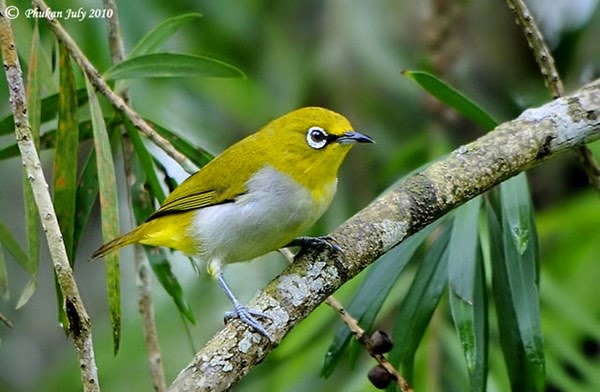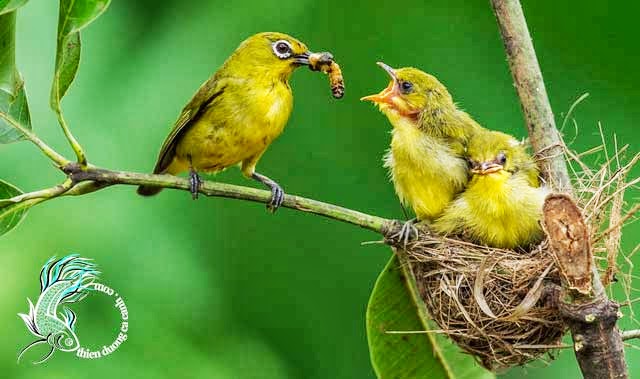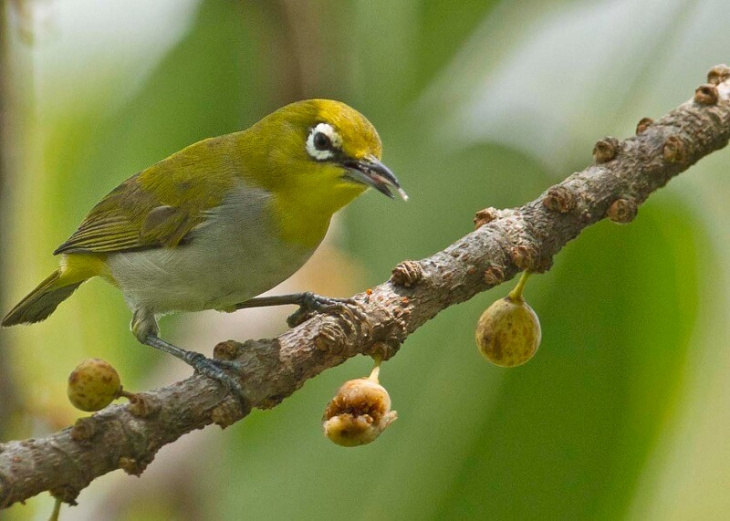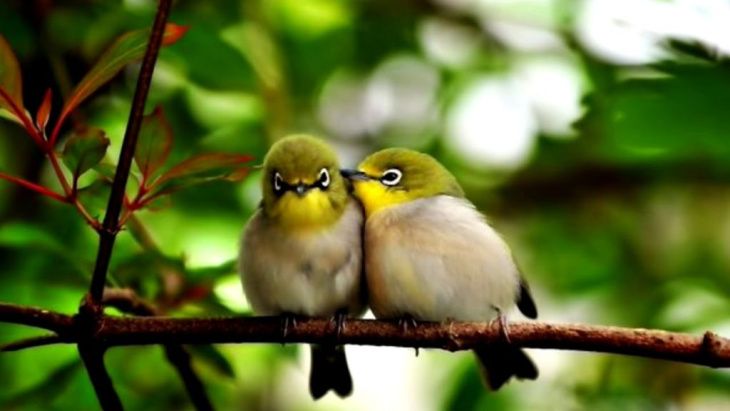It’s astonishing how after years of birding, even aam-janta birds can keep you guessing: These days when I set out for a walk around 5.30 am, the garden and lawns are resounding with birdsong – a sort of city-bird morning chorus, if you may.
Carefully, I try and single out the performers: bulbuls have their individual mellifluous notes; there are a couple of magpie-robins playing their flutes at either end of the big lawn and, thankfully, the jungle babblers haven’t woken up just yet. Occasionally, you hear the wheezy, husky chortles of the yellow-footed green pigeons hiding out in the satparni trees.
 But these days what has caught my attention – and made me frown — is a fairly loud, continuous song that I suspect belong to those lovely little, goggle-eyed yellow and ash-grey birds – the white-eyes. In a particular corner of the large lawn, near a large mango tree, they drown the songs of all the others; and which brings us to the issue: Generally white-eyes are soft-spoken birds that communicate with an often barely-audible background jingling call or a sharpish ‘cheer’.
But these days what has caught my attention – and made me frown — is a fairly loud, continuous song that I suspect belong to those lovely little, goggle-eyed yellow and ash-grey birds – the white-eyes. In a particular corner of the large lawn, near a large mango tree, they drown the songs of all the others; and which brings us to the issue: Generally white-eyes are soft-spoken birds that communicate with an often barely-audible background jingling call or a sharpish ‘cheer’.

They are chiefly arboreal, hunting for insects, spiders, berries, and nectar among the blooms, often hanging upside down on branches in order to conduct a thorough inspection. Outside of the breeding season – which may stretch from February to September — they are sociable little birds (smaller than sparrows) gathering together in flocks of even 50 or more.
Also Read | If there’s anyone truly atmanirbhar, it’s got to be a tree
They really do resemble very well brought-up little birds who take life rather seriously. (The white eye-ring makes them look as though they are wearing monocles in each eye and are somewhat scholarly!) And they are soft-voiced.
The birds I hear in the lawn are anything but. They drown out even the magpie-robin’s fluting whistles. So was this a rather bohemian little white-eye trying to outsing even the maestro? But again, it sounded like a chorus of white-eyes that were singing, not an individual. Well, perhaps, if they were all madly in love and courting the same girl, maybe each gentleman white-eye had enough testosterone coursing through his little body to make him and all of them sound like an entire chorus.

That could account for the decibel level and the non-stop stream of songs – though now how would a lady tell one dude from another and make her choice?! Maybe she’d just pick the sly one who kept shut and hopped up next to her whispering sweet-nothings in her ear! Really, there is so much we have to discover regarding the love life of even the commonest species!

Then another thought struck me: Was this just a magpie-robin trying to pull a fast one and pretending to be a white-eye? Magpie robins have a pretty extensive repertoire of songs. But towhat end? Surely mimicking a white-eye would not impress any lady magpie-robin as maybe impersonating Mozart would.
To ensure that I had remembered the song correctly, I checked with the great know-it-all — Google. Sure enough, there was a recording of white-eyes which sounded quite like the song I had heard in the garden. But again, it was not loud enough, and not in a continuous stream. Maybe then, the little white-eyes simply had to sing in chorus at the tops of their voices in order to be heard over the rest of the morning chorus?
White-eyes are common all over India and especially in the hills, and in my neck of the woods (North Delhi), certainly commoner than house sparrows. They build tiny cup-like nests out of grass, lichen, rootlets, moss and cobwebs strung like hammocks between horizontal branches at the end of a bough. Two to four pale blue eggs are laid, which hatch in around 10 days and both parents take care of the babies.
I have frequently watched them investigating the bougainvillea outside my bedroom window, quietly and carefully inspecting the blooms for spiders and small insects and keeping in touch with each other all the time. When the bottlebrush flowers, they do get into a bit of a tizzy, because now there are insects and plentiful nectar on offer all at the same time!

They don’t mind sharing space with other species like the loud-voiced tailorbird, or even the harsh-voiced jungle babblers and pugnacious bulbuls. But they have been accused of damaging ripening orchards of mango and guava by poking their bills into the fruit to suck the sweet juice – though they probably also get rid of a lot of pestiferous insects that would do even more damage.
I listened to them carefully yet again this morning and hmm…the doubts surfaced yet again… So I went to the third umpire – a birding group I am a member of. And well, one report did turn up (from Nepal) that ascertained that magpie-robins did, in fact, impersonate other birds. So, it looks like the charismatic little white-eye has got a big ‘like’ from none other than the maestro himself!





